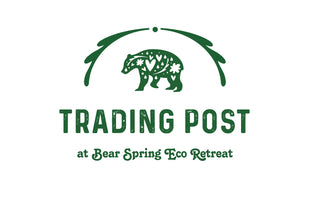I have been very skeptical about schemes where one buys a carbon offset in the form of a planted tree. In my opinion, it's a scam. As the owner of an environmentally friendly business, I can tell you that I have been approached to participate in these schemes often. I recognized some holes in these programs right from the start. I am disappointed to see how much this business model has grown in recent years.
There are a number of good reasons not to buy into these programs and I’m going to outline them here:
1. Purchasing carbon offsets are supposed to cancel out the emissions that would have been spewed into the atmosphere without intervention. For example, you may purchase a tree-planting to offset the emissions generated by your air travel. The problem is that planting a tree can take up to 10 years before they actually start storing carbon and to realize the true offset, trees must live for at least a 100 years.
I concur, it induces consumption. We can’t actually plant our way out of the climate crisis. We have to reduce our consumption and that means also reducing the amount we travel by air among other things.
2. Tree planting can do more harm than good. Often trees are planted where they don’t naturally grow and that can have damaging effects on the environment. For example, planting trees in the arctic tundra where snow cover helps reflect heat back to the atmosphere is disrupted by the dark foliage of trees that retain the heat.
Forests also need diversity to store carbon. Many tree plantations end up being mono-crops of spruce or other regularly harvested species that become vulnerable to forest fires and disease. These emit more carbon than they store. Even worse, many of these young forests are regularly sprayed with glyphosate (a powerful herbicide also contained in Roundup) to keep the deciduous trees at bay. Yet, deciduous trees, like aspen, act as fire blocks. Without them, forests are even more prone to wildfires. Ironically, many tree planting schemes involve planting trees in these areas already ravaged by wildfires.
Tree planting schemes can actually promote deforestation too. Old growth and naturally established forests contain more species of plants and animals than plantation forests. Due to this, they can hold more carbon. But, policies aimed at promoting tree planting can unintentionally incentivize deforestation of these existing carbon sinks.
A recent example of this negative policy is the Sembrando Vida programme, which provides incentives to landowners for planting trees. The problem is that many rural landowners cut down healthy existing older forests to plant seedlings. From an economic perspective, you can’t blame landowners for taking advantage of this lucrative policy but, it has resulted in the destruction of thousands of hectares of mature forests.
Here in Canada, we have similar policies that prioritize industry but do little to ensure this public asset is managed in a long term, sustainable manner. We allow logging companies to clear cut old growth forests in exchange for stumpage fees and reforestation. But, those reforestation standards often don’t meet the objectives the public would support.
These cut blocks are mostly replanted with mono crops of spruce, fir or pine that can be harvested again within the next 30 years. A forest must exist for at least 100 years to actually store carbon at the level we need.
With the rising cost of lumber, I have noticed that even small private landowners are clearing their properties for a profit. Perhaps, we need to create an incentive to keep these old forests intact. Our current policies do nothing to protect them. Existing forests offer far more carbon storage than cutting them and replanting them ever will. We must protect them.
There is also the situation where short-term tree plantations are planted and harvested every few decades for climate fighting purposes such as biofuels. Biofuels can help reduce fossil fuel consumption but, if it undermines biodiversity, the benefits are questionable. While harvested wood can be great carbon storage if it ends up in long lived products (like houses), a lot of timber is harvested for the production of toilet paper. It would be a shame to let old growth trees get destroyed for this type of production. Even if the cut block is replanted, that old growth can never truly be replaced.
3. Tree planting schemes are not very well regulated. It’s really hard to know if your carbon offset purchase really has the value you’re paying for. For example, Audubon began selling carbon credits to protect a natural sanctuary. They claimed that many of the trees could not be saved without carbon payments. Yet, the trees in the sanctuary were already protected and highly unlikely to be cut in the first place. So, basically, your carbon offset purchase did nothing to actually sequester carbon. It was really just a cash grab for Audubon.
Companies are buying the right to claim they’ve reduced hundreds of thousands of tons of emissions when in fact, they are not. Even though this money sometimes does accomplish good work, such as protecting existing forests, many carbon offset purchases are taking credit for activity that is already occurring. This makes the credits meaningless and undermines the credibility of the entire carbon offset market.
Purchasing these credits has become an increasingly common way for businesses to claim large reductions in their emissions and appear to be environmentally friendly to their customers. Sadly, it’s often just green washing. It’s really just another way to promote consumption under the false assumption that planting a tree will cancel out the negative impacts of doing so. And, it’s creating a whole new market based on extraction instead of preservation. It’s enabling us to fly more, drive more and consume more when, in fact, we really need to reduce it all.
Offsetting via tree-planting looks like a simple solution. In reality, it is very suspicious. When you check off that box that says the airline will take care of the emissions generated by your airfare you have no idea how they will actually accomplish this. There is no way to verify that the tree was actually planted, or if there is a tree planted, that it will actually offset your emissions. What company is actually ensuring those trees will live in a sustainable forest for a hundred years?
As a small eco business owner, I don’t believe that buying tree-planting offsets and selling them to my customers is a solution. I’m already doing the difficult work. Doing the right thing is never easy but, thinking that you can just purchase a tree and go on about your day as usual is only contributing to the climate crisis. Don’t be fooled. We can't buy our way out of this. We must preserve what we already have.
Resources:
https://theconversation.com/amp/there-arent-enough-trees-in-the-world-to-offset-societys-carbon-emissions-and-there-never-will-be-158181
https://www.bloomberg.com/news/features/2021-04-05/a-top-u-s-seller-of-carbon-offsets-starts-investigating-its-own-projects
https://www.dezeen.com/2021/07/05/carbon-climate-change-trees-afforestation/amp/



Leave a comment